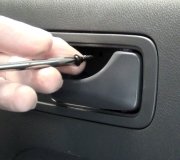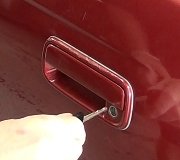There is a less expensive way but it's definitely not easier. The issue is there are actually four switches involved in a passenger window. Two are in the driver's switch assembly and two are in the passenger's switch. All four of them make contact, or a complete circuit, to ground when they're released. When one of the switches is activated, one of its switches breaks the circuit to ground first, then makes the circuit to 12 volts. The other switch remains connected to ground. It's those three that remain grounded that could have a bad contact along with the one that is activated. In other words, regardless of which switch is activated which way, all current has to flow through four sets of contacts, ... Two in each switch.
You would have to use a voltmeter or test light to see how far you have voltage and where you lose it, and you'd have to follow the path in the wiring diagram to get the right wire colors. To really complicate it, to be accurate, any such testing has to be done with everything connected so current is trying to flow. If no current is trying to flow, a burned connection can be overlooked when the voltmeter picks up a voltage that sneaks through due to needing almost no current.
If you have the wiring diagram, a test light or voltmeter, and the time, that's fine, but when we have to charge for our time, it's much faster to just plug in a good used switch and try it. There's plenty of them in the salvage yards, so you don't have to buy new ones.
You may also be able to determine which switch is causing the problem by measuring the voltages on the various wires. One will have 12 volts all the time. Ignore that one. Of the other four wires on that switch, only one will get 12 volts when it is activated. If you activate the switch and find 12 volts on none of those four wires, or two of those wires, that's the bad switch.
Monday, May 5th, 2014 AT 7:33 PM


